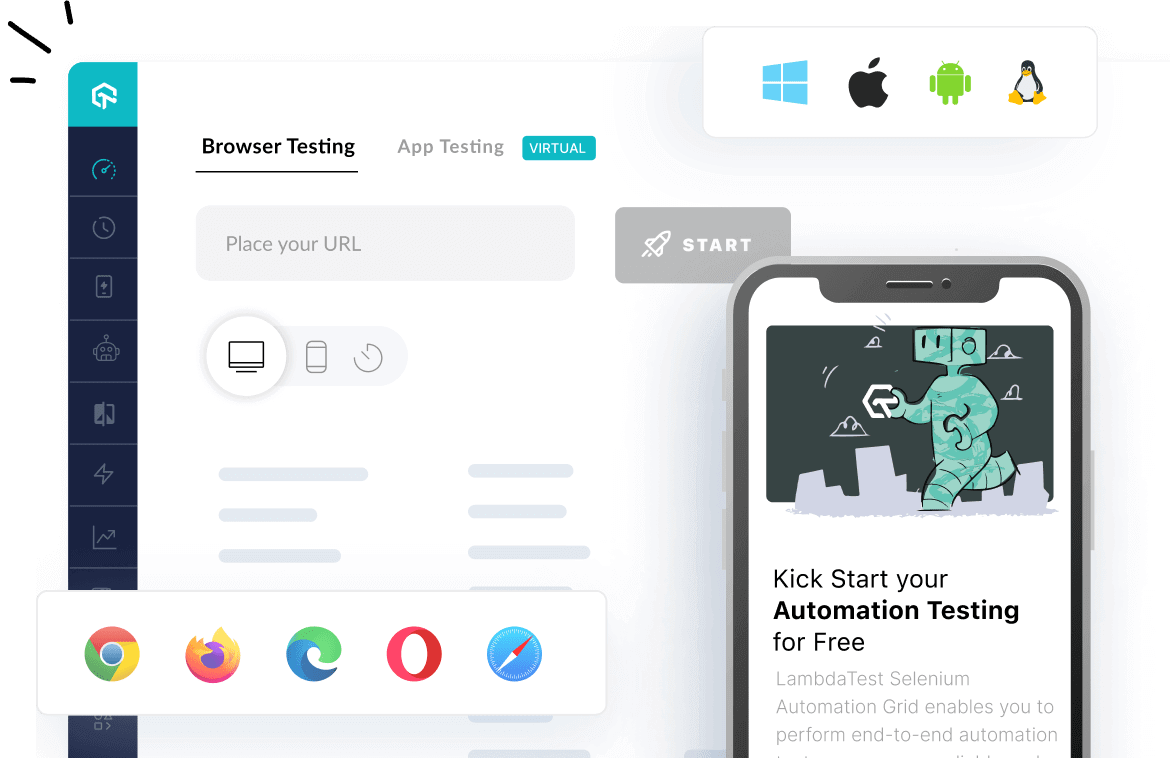How to use getHTTP2ServerWithCustomConnContext method of httpext Package
Best K6 code snippet using httpext.getHTTP2ServerWithCustomConnContext
error_codes_test.go
Source:error_codes_test.go
...261 assert.Equal(t, urlError.Err.Error(), msg)262}263func TestHTTP2ConnectionError(t *testing.T) {264 t.Parallel()265 tb := getHTTP2ServerWithCustomConnContext(t)266 // Pre-configure the HTTP client transport with the dialer and TLS config (incl. HTTP2 support)267 tb.Mux.HandleFunc("/tsr", func(rw http.ResponseWriter, req *http.Request) {268 conn := req.Context().Value(connKey).(*tls.Conn) //nolint:forcetypeassert269 f := http2.NewFramer(conn, conn)270 require.NoError(t, f.WriteData(3213, false, []byte("something")))271 })272 client := http.Client{273 Timeout: time.Second * 5,274 Transport: tb.HTTPTransport,275 }276 _, err := client.Get(tb.Replacer.Replace("HTTP2BIN_URL/tsr")) //nolint:bodyclose,noctx277 code, msg := errorCodeForError(err)278 assert.Equal(t, unknownHTTP2ConnectionErrorCode+errCode(http2.ErrCodeProtocol)+1, code)279 assert.Equal(t, fmt.Sprintf(http2ConnectionErrorCodeMsg, http2.ErrCodeProtocol), msg)280}281func TestHTTP2GoAwayError(t *testing.T) {282 t.Parallel()283 tb := getHTTP2ServerWithCustomConnContext(t)284 tb.Mux.HandleFunc("/tsr", func(rw http.ResponseWriter, req *http.Request) {285 conn := req.Context().Value(connKey).(*tls.Conn) //nolint:forcetypeassert286 f := http2.NewFramer(conn, conn)287 require.NoError(t, f.WriteGoAway(4, http2.ErrCodeInadequateSecurity, []byte("whatever")))288 require.NoError(t, conn.CloseWrite())289 })290 client := http.Client{291 Timeout: time.Second * 5,292 Transport: tb.HTTPTransport,293 }294 _, err := client.Get(tb.Replacer.Replace("HTTP2BIN_URL/tsr")) //nolint:bodyclose,noctx295 require.Error(t, err)296 code, msg := errorCodeForError(err)297 assert.Equal(t, unknownHTTP2GoAwayErrorCode+errCode(http2.ErrCodeInadequateSecurity)+1, code)298 assert.Equal(t, fmt.Sprintf(http2GoAwayErrorCodeMsg, http2.ErrCodeInadequateSecurity), msg)299}300type connKeyT int32301const connKey connKeyT = 2302func getHTTP2ServerWithCustomConnContext(t *testing.T) *httpmultibin.HTTPMultiBin {303 const http2Domain = "example.com"304 mux := http.NewServeMux()305 http2Srv := httptest.NewUnstartedServer(mux)306 http2Srv.EnableHTTP2 = true307 http2Srv.Config.ConnContext = func(ctx context.Context, c net.Conn) context.Context {308 return context.WithValue(ctx, connKey, c)309 }310 http2Srv.StartTLS()311 t.Cleanup(http2Srv.Close)312 tlsConfig := httpmultibin.GetTLSClientConfig(t, http2Srv)313 http2URL, err := url.Parse(http2Srv.URL)314 require.NoError(t, err)315 http2IP := net.ParseIP(http2URL.Hostname())316 require.NotNil(t, http2IP)...getHTTP2ServerWithCustomConnContext
Using AI Code Generation
1func getHTTP2ServerWithCustomConnContext() *http.Server {2 return &http.Server{3 Handler: http.HandlerFunc(func(w http.ResponseWriter, r *http.Request) {4 fmt.Fprintf(w, "Hello, %q", html.EscapeString(r.URL.Path))5 }),6 }7}8func getHTTP2ServerWithCustomTLSConnState() *http.Server {9 return &http.Server{10 Handler: http.HandlerFunc(func(w http.ResponseWriter, r *http.Request) {11 fmt.Fprintf(w, "Hello, %q", html.EscapeString(r.URL.Path))12 }),13 TLSConfig: &tls.Config{14 GetConfigForClient: func(info *tls.ClientHelloInfo) (*tls.Config, error) {15 return &tls.Config{16 }, nil17 },18 },19 }20}21func getHTTP2ServerWithCustomTLSNextProto() *http.Server {22 return &http.Server{23 Handler: http.HandlerFunc(func(w http.ResponseWriter, r *http.Request) {24 fmt.Fprintf(w, "Hello, %q", html.EscapeString(r.URL.Path))25 }),26 TLSConfig: &tls.Config{27 NextProtos: []string{"h2", "http/1.1"},28 },29 }30}31func getHTTP2ServerWithCustomTLSVerifyPeerCertificate() *http.Server {32 return &http.Server{33 Handler: http.HandlerFunc(func(w http.ResponseWriter, r *http.Request) {34 fmt.Fprintf(w, "Hello, %q", html.EscapeString(r.URL.Path))35 }),36 TLSConfig: &tls.Config{37 VerifyPeerCertificate: func(rawCerts [][]byte, verifiedChains [][]*x509.Certificate) error {38 },39 },40 }41}getHTTP2ServerWithCustomConnContext
Using AI Code Generation
1func getHTTP2ServerWithCustomConnContext() {2 http2Server := httpext.getHTTP2ServerWithCustomConnContext(func(ctx context.Context, c net.Conn) context.Context {3 return ctx;4 });5}6func getHTTP2ServerWithCustomConnState() {7 http2Server := httpext.getHTTP2ServerWithCustomConnState(func(c net.Conn, cs http.ConnState) {8 });9}10func getHTTP2ServerWithCustomErrorLog() {11 http2Server := httpext.getHTTP2ServerWithCustomErrorLog(func(err error) {12 });13}14func getHTTP2ServerWithCustomMaxHeaderBytes() {15 http2Server := httpext.getHTTP2ServerWithCustomMaxHeaderBytes(1024);16}17func getHTTP2ServerWithCustomReadBufferSize() {18 http2Server := httpext.getHTTP2ServerWithCustomReadBufferSize(1024);19}20func getHTTP2ServerWithCustomReadHeaderTimeout() {21 http2Server := httpext.getHTTP2ServerWithCustomReadHeaderTimeout(1000);22}23func getHTTP2ServerWithCustomTLSConfig() {24 http2Server := httpext.getHTTP2ServerWithCustomTLSConfig(nil);25}26func getHTTP2ServerWithCustomWriteBufferSize() {27 http2Server := httpext.getHTTP2ServerWithCustomWriteBufferSize(1024);28}29func getHTTP2ServerWithCustomWriteTimeout() {getHTTP2ServerWithCustomConnContext
Using AI Code Generation
1connCtx := func(ctx context.Context, c net.Conn) context.Context {2}3srv := httpext.getHTTP2ServerWithCustomConnContext(connCtx)4srv.Serve(ln)5connCtx := func(ctx context.Context, c net.Conn) context.Context {6}7srv := httpext.getHTTP2ServerWithCustomConnContext(connCtx)8srv.Serve(ln)9connCtx := func(ctx context.Context, c net.Conn) context.Context {10}11srv := httpext.getHTTP2ServerWithCustomConnContext(connCtx)12srv.Serve(ln)13connCtx := func(ctx context.Context, c net.Conn) context.Context {14}15srv := httpext.getHTTP2ServerWithCustomConnContext(connCtx)16srv.Serve(ln)17connCtx := func(ctx context.Context, c net.Conn) context.Context {18}19srv := httpext.getHTTP2ServerWithCustomConnContext(connCtx)20srv.Serve(ln)21connCtx := func(ctx context.Context, c net.Conn) context.Context {22}23srv := httpext.getHTTP2ServerWithCustomConnContext(connCtx)24srv.Serve(ln)25connCtx := func(ctx context.Context, c net.Conn) context.Context {26}27srv := httpext.getHTTP2ServerWithCustomConnContext(connCtx)28srv.Serve(ln)getHTTP2ServerWithCustomConnContext
Using AI Code Generation
1func main() {2 var handler = func(w http.ResponseWriter, r *http.Request) {3 fmt.Fprintf(w, "Hello World!")4 fmt.Println("connCtx: ", r.Context().Value(connCtxKey))5 fmt.Println("reqCtx: ", r.Context().Value(reqCtxKey))6 }7 var server = httpext.getHTTP2ServerWithCustomConnContext(handler, connCtxKey, connCtxVal)8 var reqCtx = context.WithValue(context.Background(), reqCtxKey, reqCtxVal)9 var req = &http.Request{Method: "GET", URL: &url.URL{Scheme: "https", Host: "localhost:8080", Path: "/"}, Header: http.Header{}, Host: "localhost:8080", Context: reqCtx}10 var resp, _ = server.Do(req)11 fmt.Println("resp: ", resp)12}13func main() {14 var handler = func(w http.ResponseWriter, r *http.Request) {15 fmt.Fprintf(w, "Hello World!")16 fmt.Println("connCtx: ", r.Context().Value(connCtxKey))17 fmt.Println("reqCtx: ", r.Context().Value(reqCtxKey))18 }19 var server = httpext.getHTTP2ServerWithCustomConnContext(handler, connCtxKey, connCtxVal)20 var reqCtx = context.WithValue(context.Background(), reqCtxKey, reqCtxVal)21 var req = &http.Request{Method: "GET", URL: &url.URL{Scheme: "https", Host: "localhost:8080", Path: "/"}, Header: http.Header{}, Host: "localhost:8080", Context: reqCtx}22 var resp, _ = server.Do(req)23 fmt.Println("resp: ", resp)24}Automation Testing Tutorials
Learn to execute automation testing from scratch with LambdaTest Learning Hub. Right from setting up the prerequisites to run your first automation test, to following best practices and diving deeper into advanced test scenarios. LambdaTest Learning Hubs compile a list of step-by-step guides to help you be proficient with different test automation frameworks i.e. Selenium, Cypress, TestNG etc.
LambdaTest Learning Hubs:
- JUnit Tutorial
- TestNG Tutorial
- Webdriver Tutorial
- WebDriverIO Tutorial
- Protractor Tutorial
- Selenium 4 Tutorial
- Jenkins Tutorial
- NUnit Tutorial
- Jest Tutorial
- Playwright Tutorial
- Cypress Tutorial
- PyTest Tutorial
YouTube
You could also refer to video tutorials over LambdaTest YouTube channel to get step by step demonstration from industry experts.
Most used method in
- errorCodeForNetOpError
- NewK6Error
- MakeBatchRequests
- TestMakeRequestDialTimeout
- stdCookiesToHTTPRequestCookies
- MakeRequest
- compressBody
- newDecompressionError
- wrapDecompressionError
- readResponseBody
- Timeout
- testErrorCode
- TestDnsResolve
- TestX509UnknownAuthorityError
- TestHTTP2ConnectionError
- getHTTP2ServerWithCustomConnContext
- Trace
- now
- TLSHandshakeDone
- WroteRequest
- TestTracer
Try LambdaTest Now !!
Get 100 minutes of automation test minutes FREE!!

